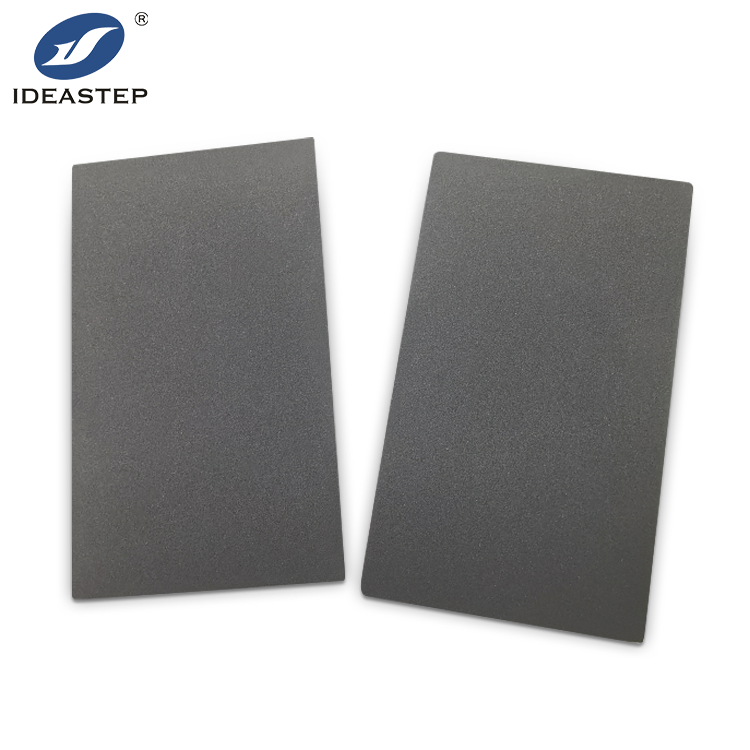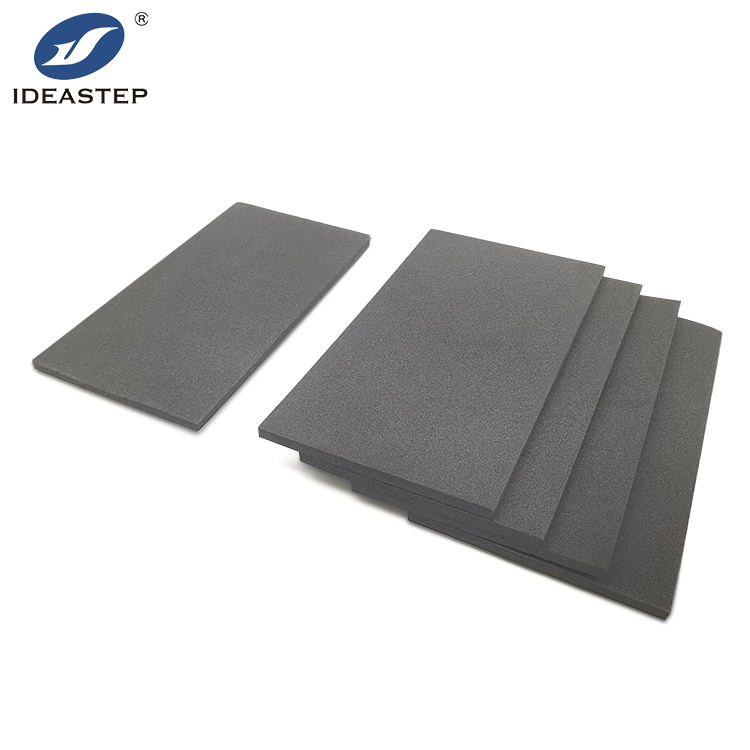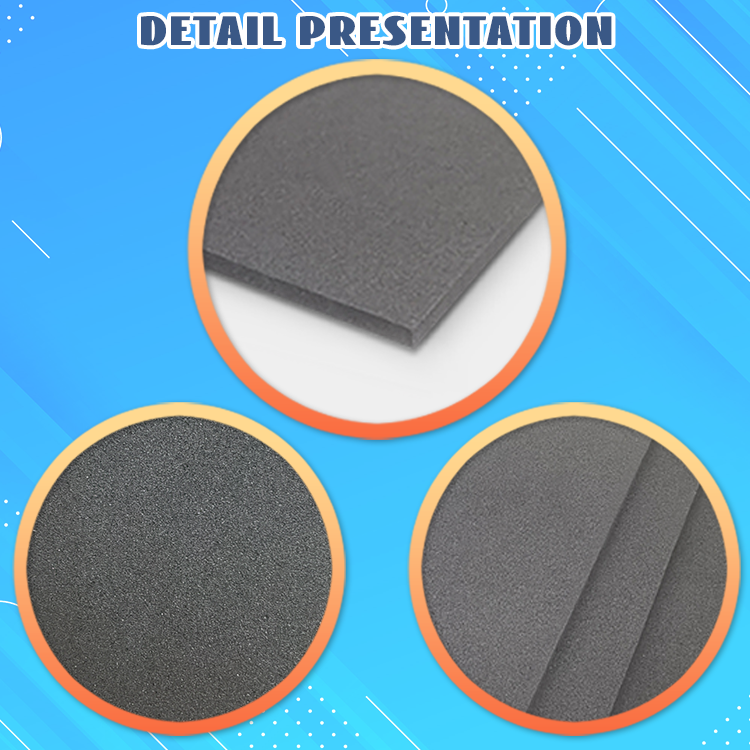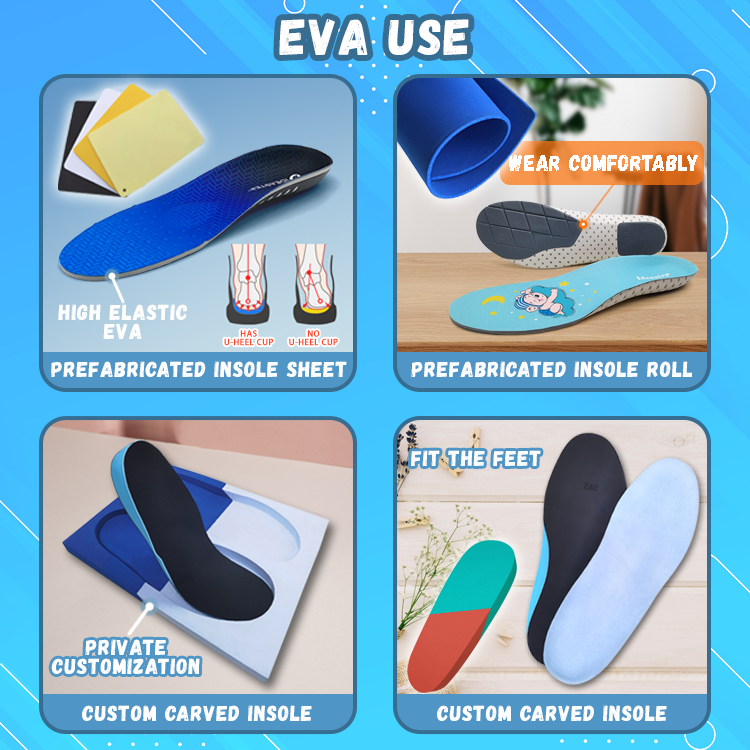EVA material is increasingly recognized as an ideal choice for custom orthotic insoles for diabetic patients due to its exceptional properties. This guide explores the reasons why EVA is particularly beneficial for managing diabetes-related foot issues.
Why EVA Material is Ideal for Custom Orthotic Insoles for Diabetic Patients
Diabetic patients often face various foot-related issues due to their condition, including poor circulation, neuropathy, and increased risk of ulcers. Custom orthotic insoles are crucial in managing these problems by providing enhanced comfort, support, and protection. Among the various materials used for orthotic insoles, EVA (Ethylene Vinyl Acetate) stands out as an excellent choice. Here’s why EVA material is ideal for custom orthotic insoles for diabetic patients.

1. Superior Cushioning and Shock Absorption
EVA material is renowned for its superior cushioning and shock absorption properties. This is crucial for diabetic patients who often suffer from sensitive feet due to neuropathy or poor circulation. EVA insoles effectively reduce the impact on the feet with each step, which helps in alleviating pain and discomfort. The cushioning provided by EVA helps to distribute pressure evenly, reducing the risk of developing pressure ulcers and other foot complications.
2. Lightweight and Flexible
One of the key benefits of EVA material is its lightweight and flexible nature. Custom orthotic insoles made from EVA are easy to wear and do not add extra weight to the footwear, which is particularly beneficial for diabetic patients who may already be dealing with mobility issues. The flexibility of EVA allows the insoles to conform to the unique shape of the patient’s feet, providing personalized support and enhancing overall comfort.

3. Moisture Resistance and Breathability
Diabetic patients are at a higher risk of foot infections and fungal growth due to excess moisture. EVA material offers excellent moisture resistance and breathability, which helps in keeping the feet dry and reducing the risk of infections. The breathability of EVA insoles ensures that air circulates freely, preventing the build-up of sweat and moisture that can lead to unpleasant odors and skin issues.
4. Customizable and Durable
EVA is highly customizable, allowing for the creation of orthotic insoles tailored to the specific needs of diabetic patients. The material can be easily molded to fit the contours of the feet, providing targeted support where it’s needed most. Additionally, EVA is known for its durability and resilience. Custom orthotic insoles made from EVA can withstand daily wear and tear, ensuring long-lasting performance and reliability.

5. Affordable and Cost-Effective
Cost is often a significant consideration in the selection of materials for orthotic insoles. EVA material is relatively affordable compared to other advanced materials used in orthotics. This makes EVA an attractive option for producing high-quality custom insoles at a lower cost. The cost-effectiveness of EVA does not compromise its performance, making it a practical choice for managing diabetic foot issues without breaking the bank.
6. Easy Maintenance
Maintaining orthotic insoles is essential for ensuring their longevity and effectiveness. EVA insoles are easy to clean and maintain. They can be wiped down with a damp cloth and mild soap, making them convenient for regular use. The low-maintenance nature of EVA helps in keeping the insoles hygienic and in good condition, which is particularly important for diabetic patients who need to maintain optimal foot health.

7. Proven Effectiveness
Many healthcare professionals and orthotic specialists recommend EVA material for diabetic foot care due to its proven effectiveness. Numerous studies and clinical experiences have highlighted the benefits of EVA insoles in reducing foot pain, improving comfort, and preventing foot injuries. Reputable suppliers like Ideastep provide high-quality EVA orthotic insoles based on extensive research and positive feedback from healthcare providers.

Conclusion
EVA material offers a range of benefits that make it ideal for custom orthotic insoles for diabetic patients. Its superior cushioning, lightweight nature, moisture resistance, customizability, durability, cost-effectiveness, and ease of maintenance contribute to its effectiveness in managing diabetic foot issues. By choosing EVA for orthotic insoles, patients can experience enhanced comfort and protection, leading to improved overall foot health.
FAQ
1. What makes EVA material suitable for diabetic foot care?
EVA material is suitable for diabetic foot care due to its excellent cushioning, shock absorption, moisture resistance, and breathability. These properties help in reducing pressure on the feet, keeping them dry, and providing personalized support, which is crucial for managing diabetes-related foot problems.
2. How often should EVA orthotic insoles be replaced?
The replacement frequency of EVA orthotic insoles depends on various factors such as usage, wear and tear, and changes in foot condition. Generally, it is recommended to replace them every 6 to 12 months or as needed to ensure continued support and comfort. Regular inspection of the insoles can help determine when replacement is necessary.
3. Can EVA orthotic insoles be customized for specific foot conditions?
Yes, EVA orthotic insoles can be customized to address specific foot conditions. The material’s flexibility and moldability allow for the creation of insoles that provide targeted support and cushioning based on individual needs. Consulting with an orthotic specialist can help in designing insoles that meet specific requirements for diabetic foot care.
